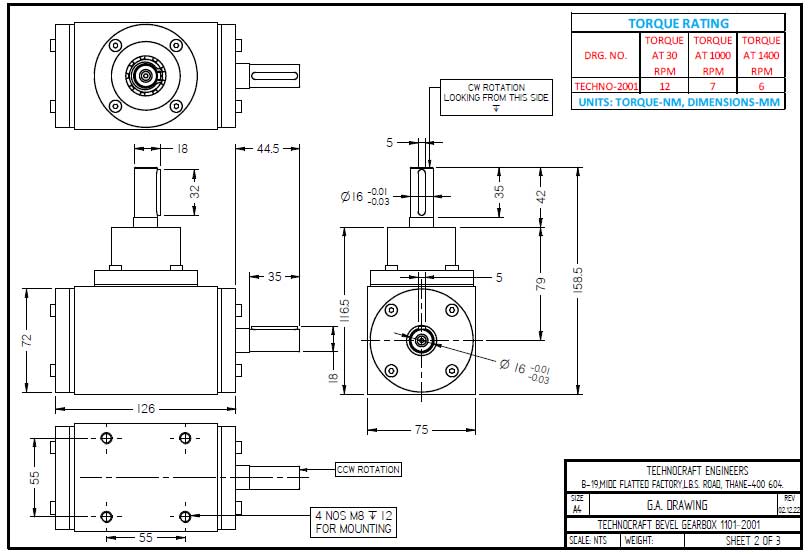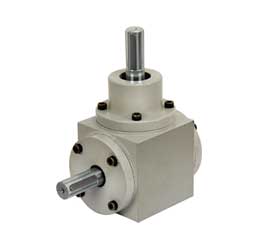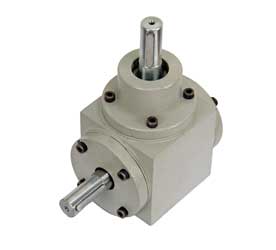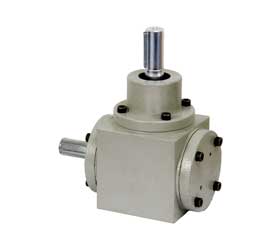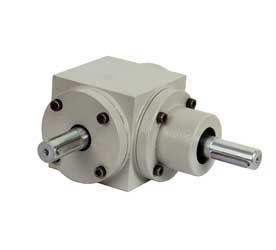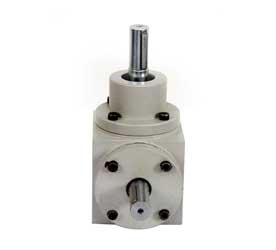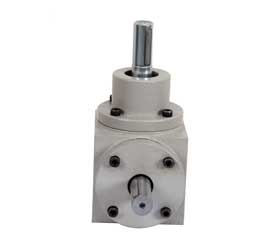Compact Bevel Gearbox
-
SALIENT FEATURES
- 1) MILD STEEL HOUSING
- 2) BEVEL GEARS TEETH GENERATED ON PRECISION GENERATOR, CASE HARDENED AND CYLINDRICALLY GROUND
- 3) PROVISION FOR TAPER ROLLAR BEARINGS AT OUTPUT IN CASE OF AXIAL LOAD
- 4) COMPACT BUT ROBUST DESIGN
A compact bevel gearbox is a type of gearbox that uses bevel gears to transmit power between shafts that are perpendicular to each other. Bevel gears have angled teeth that allow them to mesh with each other at a right angle, making them ideal for transferring power between two perpendicular shafts.
A compact bevel gearbox is designed to be space-efficient, with a compact and lightweight design that makes it ideal for use in applications where space is limited. This type of gearbox is commonly used in a variety of industries, including automotive, aerospace, and manufacturing.
The advantages of a compact bevel gearbox include its ability to transmit power efficiently between perpendicular shafts, its space-efficient design, and its ability to operate quietly and smoothly. Additionally, this type of gearbox is easy to install and maintain, making it a popular choice for many different applications.
Overall, a compact bevel gearbox is an important component in many different types of machinery, providing reliable power transmission and helping to keep equipment running smoothly and efficiently.
The specifications of a compact bevel gearbox can vary depending on the specific application and requirements, but some common specifications include:
Gear ratio: The gear ratio determines the relationship between the input and output speed of the gearbox. It is calculated by dividing the number of teeth on the output gear by the number of teeth on the input gear.
Torque capacity: The torque capacity of the gearbox is the maximum amount of torque that it can handle without experiencing damage or failure. It is typically specified in Newton-meters (Nm) or foot-pounds (lb-ft).
Input and output shaft diameter: The diameter of the input and output shafts determines the maximum amount of torque that can be transmitted through the gearbox.
Operating temperature range: The operating temperature range specifies the minimum and maximum temperatures that the gearbox can operate in without experiencing damage or failure.
Lubrication requirements: The lubrication requirements specify the type and amount of lubrication that is needed to keep the gearbox running smoothly and to prevent wear and damage to the gears.
Mounting options: The mounting options specify how the gearbox can be mounted to the equipment, including the type of mounting flange or bracket that is required.
Noise level: The noise level of the gearbox is an important consideration for applications where noise levels need to be kept to a minimum, such as in medical equipment or laboratory instruments.
Overall, the specifications of a compact bevel gearbox will depend on the specific application and requirements, but these are some common specifications that are typically included in product datasheets or technical documentation.

